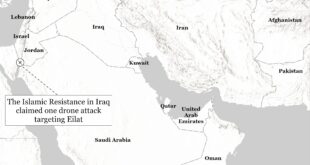The head of Iran’s judiciary is seeking to impose limits on public executions amid a rise in death-penalty cases during President Mahmud Ahmadinejad’s 2 1/2 years in office.Â
Â
Â
Long regarded by rights groups as the world’s leading executioner of children, Iran put some 300 people to death in 2007, up from under 200 the previous year.
Â
So far, 2008 is shaping up to be no less lethal. More than 30 people have already been put to death this month, including five convicted murderers hanged on January 30 in Tehran’s notorious Evin prison.
Â
The same day, Ayatollah Mahmud Hashemi-Shahrudi, Iran’s judiciary chief, ordered a halt to public executions unless they had his approval. His decree also prohibited publishing photos or images of executions in the media. Previously, presiding judges had decided whether to subject a condemned criminal to public execution.
Â
But the record suggests it might be premature to think that average Iranians have seen the last of the makeshift gallows and other grim spectacles that authorities use to remind them that the executioner awaits wrongdoers.
Â
Public Outrage
Â
The sister of a 48-year-old musician and teacher, Abdollah Farivar Moghaddam, told Radio Farda this week that the country’s highest court recently rejected an appeal against Moghaddam’s death sentence by stoning for adultery.
Â
Moghaddam’s sister suggested a prosecutor recently responded almost gleefully in rejecting her appeals, vowing to publicly execute the father of two as soon as he received the high court’s verdict in writing.
Â
She said the authorities based their case on a bogus confession and, since his imprisonment in 2003, misplaced evidence of her brother’s 99-year temporary marriage — a frequent tool to avoid running afoul of Iran’s Islamic laws on male-female relations outside of wedlock.
Â
“I asked the prosecutor where such a thing could be possible,” Moghaddam’s sister told Radio Farda. “I screamed and said that I want my rights, and the judge shouted at me and said, ‘Upon receiving the verdict in writing, I will implement it in public.'”
Â
Public executions have previously been used for crimes that cause public outrage. But reports suggest that under Ahmadinejad’s hard-line administration, the spectacle has been increasingly used to intimidate dissenters.
Â
Judiciary spokesman Alireza Jamshidi said that according to the new decree, public executions would be carried out on a “social-necessity†basis. In a statement, he did not elaborate. But he said executions should not be carried out or publicized in a way that would be a “psychological disturbance to society, especially the youth.”
Â
Child Offenders
Â
Some Iranian youth might be more worried about being executed themselves. After all, the group Human Rights Watch calls Iran the world’s leading executor of children and juvenile offenders.
Â
Lawyer Mohammad Mostafai defends young men on death row, including a boy named Said Jazi. Speaking to Radio Farda, Mostafai recalled that the execution of individuals under 18 years of age violates Iran’s own commitments as a signatory to the United Nations Convention on the Rights of Children.
Â
“Article 37 of that convention clearly asserts that executing individuals under 18 is condemned,” Mostafai said. “Considering due process in the parliament and in the Guardians Council, the execution of individuals who have committed a crime when they were under 18 years of age has no legal basis. But unfortunately in our country they wait for the minors to reach the legal age [and then execute them].â€
Â
Iran’s judiciary regularly issues death sentences for minors and executes them after they turn 18, but there have also been cases where criminal offenders have been executed while they were still minors.
Â
Amnesty International, which opposes the death penalty around the world in all cases, counts up to 80 child offenders currently facing the death penalty in Iran. It also says five juvenile offenders have been executed there in the past year.
Â
Capital offenses in Iran include murder, rape, armed robbery, serious drug trafficking, and adultery. Hanging is the most common method of execution in the country, although stoning and firing squads are used in some cases.
Â
Reports say Iran has executed at least 33 convicts since the start of the year.
Â
Amnesty International’s Ann Harrison says she is “very disturbed to see that the rate of executions continues to be very high in Iran.”
Â
Such concerns have put Iran’s judiciary under greater international scrutiny, particularly over the execution of minors and what are seen as cruel forms of killing, such as stoning.
Â
Amnesty International on January 15 called on Tehran to abolish death by stoning, stating that nine women and two men are currently waiting to be stoned to death in Iran.
Â
Such attention may explain in part the move to limit public executions. Mostafai, for one, says he believes the judiciary already tries to spread out executions to avoid international scrutiny.
Â
“I think the number of people waiting to be hanged in Iran is so high that [authorities] don’t want to hang 25 people in one go, this would raise complications internationally,” Mostafai said. “I believe they want to hang fewer people at a time, so that less noise is made internationally.”
Â
Whether the new move to limit executions in public will actually be followed is unclear. Local officials have ignored previous stay-of-execution decisions by judiciary chief Hashemi-Shahrudi, who is considered to be a moderate conservative.
Â
Antoine Blua
 Eurasia Press & News
Eurasia Press & News



